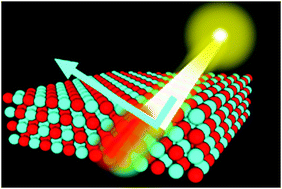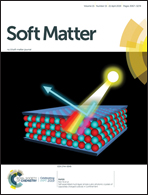Self-assembled multi-layer simple cubic photonic crystals of oppositely charged colloids in confinement
Abstract
Designing and fabricating self-assembled open colloidal crystals have become one major direction in the soft matter community because of many promising applications associated with open colloidal crystals. However, most of the self-assembled crystals found in experiments are not open but close-packed. Here, by using computer simulation, we systematically investigate the self-assembly of oppositely charged colloidal hard spheres confined between two parallel hard walls, and we find that the confinement can stabilize multi-layer NaCl-like (simple cubic) open crystals. The maximal number of layers of stable NaCl-like crystals increases with decreasing inverse screening length. More interestingly, at finite low temperature, the large vibrational entropy can stabilize some multi-layer NaCl-like crystals against the most energetically favoured close-packed crystals. In the parameter range studied, we find up to 4-layer NaCl-like crystals to be stable in confinement. Our photonic calculation shows that the inverse 4-layer NaCl-like crystal can already reproduce the large photonic band gaps of the bulk simple cubic crystal, which open in the low frequency range with a low dielectric contrast. This suggests new possibilities of using confined colloidal systems to fabricate open crystalline materials with novel photonic properties.



 Please wait while we load your content...
Please wait while we load your content...